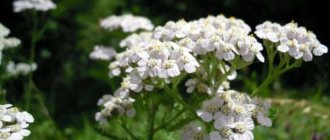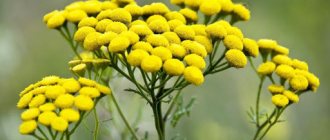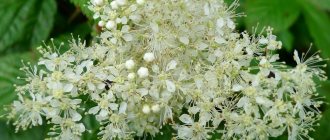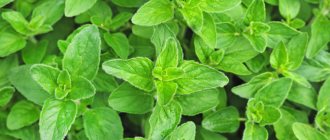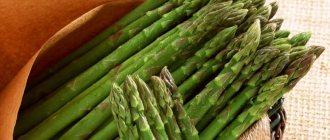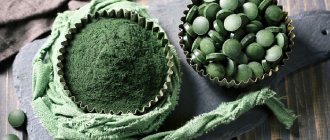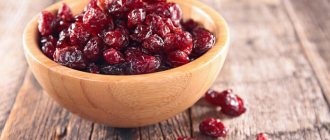The first Indian written dogmas of the Vedas date back to 5000 BC. It is in these documents (in the Rig Veda and Atharva Veda) that there are various references to the unique spice turmeric. In the texts the rhizome is called haridra. The benefits of turmeric have been tested by millions of people over several millennia. For example, the Vedas suggest using the bright spicy root to treat Prameha (the modern name for diabetes), skin diseases and joint pain. It may seem that in modern times it is inappropriate to use spices for medicinal purposes. But scientists refute this misconception.
What is turmeric
Turmeric is not only a powder or a spice, but first of all, a plant with a bright yellow rhizome. Like its counterpart ginger, the vibrant spice is used extensively in baked goods, Asian foods and beverages.
Turmeric is also known as Indian saffron, although the plant has nothing in common with the fragrant flowers. Biological name of the species: Curcuma longa. The plant is grown in India, Asia and Central America. But, with the exception of certain Indian culinary recipes, this most valuable product is practically not used in Russia. A packet of colorful seasoning can sit in your kitchen for years. But turmeric can be used not only for culinary purposes, but also for medical and cosmetic purposes.
What foods must be present in the diet?
Speaking about a healthy diet, it is necessary to note the mandatory inclusion of vegetables and fruits of different colors. Fortifying your diet with flavonoids (found in citrus fruits) has also been shown to reduce the risk of ischemic stroke.
Proteins of plant and animal origin are building materials. The daily diet should include meat and fish dishes. It is better to give preference to low-fat varieties and sea fish. To ensure your body gets protein, eat more nuts and legumes.
Plant foods also lower blood pressure and improve vascular elasticity. Add whole grains, brown unprocessed rice, and vegetable oils such as canola, olive, and flaxseed to your diet.
Dairy products should be consumed with a low percentage of fat, especially since many people are now diagnosed with lactose intolerance. If this is your case, and after consuming dairy products you feel discomfort, it is better to drink low-lactose milk or plant milk, or avoid it altogether.
Nutrition is an essential part of preventing stroke and dementia. Without a balanced diet and healthy foods, not a single pill will protect you from atherosclerosis. We are what we eat, don't forget that!
Composition and calorie content of turmeric
A teaspoon of ground spice contains approximately 18 calories, almost a gram of protein, 2 grams of fiber and 6 grams of carbohydrates. Other valuable components included:
- calcium;
- copper;
- iron;
- magnesium;
- potassium;
- phosphorus;
- zinc.
Vitamins and other nutrients make a person strong and healthy. But curcumin, a unique element that is part of turmeric, has truly healing properties. It is actively used for the prevention and treatment of inflammatory diseases.
How turmeric affects the body
The powder contains many antioxidants and anti-inflammatory agents. But it is necessary to understand that at the moment there are no convincing scientific studies confirming the therapeutic properties of the spice. The root is actively used in Ayurvedic medicine to restore energy balance. Turmeric helps with circulatory and digestive disorders, as well as arthritis and other inflammatory diseases. But this does not mean that you need to use the spice instead of synthetic medications prescribed by your doctor.
Currently, approximately 150 studies are being conducted on the properties of turmeric. Some results indicate a real reduction in inflammation. But no critically significant changes are registered, so the use of turmeric as a full-fledged medicine, and not a biological additive, is impractical. It is better to wait for more evidence from scientists.
Thanks to laboratory studies, it became known that pure curcumin is poorly absorbed by the body. Therefore, there is no point in eating the seasoning with spoons.
Benefits of turmeric
In Ayurveda, traditional Chinese and Indian medicine, curcumin powder is actively used for liver diseases. The bitter substances contained in the spice stimulate the production of bile juice. The seasoning speeds up the digestion of fats, facilitates liver function, and prevents bloating and flatulence, which is especially important after a heavy meal.
But the benefits of turmeric for the body are not limited to its positive effect on the functioning of the digestive tract. Most studies focus specifically on anti-inflammatory properties. Thus, the bright powder can be used for osteoarthritis, as well as for muscle inflammation associated with active physical exercise.
Curcumin has antioxidant properties. This means that dietary supplements and cosmetics containing active ingredients will prevent skin aging. Scientists also talk about the potential benefits of curcumin in the treatment of serious diseases, including Alzheimer's disease and cancer.
Other useful properties:
- reducing histamine levels, which is especially important for conditions such as eczema, psoriasis, asthma, arthritis, osteoarthritis and colitis;
- blood purification, improvement of the cardiovascular system by activating blood flow and reducing total cholesterol levels.
- blood thinning, preventing blood clots.
Goldenseal is also known to help reduce the severity of symptoms associated with premenstrual syndrome. Women who experience symptoms such as back, chest and abdominal pain, as well as migraines, are advised to drink curcumin tea.
Are there any contraindications?
In addition to proven beneficial properties, turmeric also has a number of contraindications:
- taking medications aimed at thinning the blood (anticoagulants, antiplatelet drugs);
- the presence of hidden wounds, erosions, ulcers, hemorrhoids, gastritis (there is a risk of bleeding);
- low blood pressure (turmeric will lower it even more);
- type 1 diabetes (a sharp decrease in blood sugar levels is possible);
- cholelithiasis (curcumin stimulates bile flow - this is dangerous in the presence of stones).
Photo: istockphoto.com
All this applies to taking curcumin preparations in medicinal (large) dosages. Turmeric itself should not be consumed on an empty stomach, and pregnant and lactating women and children under six years of age should not overdo it with this spice.
The harm of turmeric
Any product can turn into poison if you take too much of it. And turmeric is no exception! Despite its numerous positive healing properties, the spice also has side effects. It is prohibited to use the seasoning in large quantities. It is enough to add a pinch of turmeric to your favorite dishes. If you plan to use dietary supplements containing curcumin, you must strictly follow the manufacturer’s instructions.
The following symptoms indicate that it is time to reduce the amount of turmeric in your diet.
- Stomach upset. Natural turmeric powder warms, but at the same time irritates the walls of the stomach. A small amount of seasoning will only stimulate digestion and activate the production of gastric juice. But if the digestive system cannot cope with the digestion of the spice, then abdominal pain or even cramps will appear.
- Formation of kidney stones. The natural root contains oxalates, which directly affect the development of kidney stones. But a small amount of the root in powder form, on the contrary, helps the kidneys function.
- Nausea and diarrhea. The active compounds contained in turmeric irritate the entire gastrointestinal tract. If a person does not reduce the dosage after the first side effects appear, diarrhea and nausea will develop.
- Allergic reaction. A person may have an intolerance to certain compounds found in turmeric. As a result, even after a small amount of spice enters the body, a rash appears on the body. In rare cases, a negative reaction occurs even when the allergen comes into external contact with the skin.
- Iron deficiency. Turmeric does contain a sufficient amount of iron. But consuming the spice if you have iron deficiency anemia is very dangerous. After all, curcumin has the unique ability to block the absorption of iron in the intestines. As a result, the element passes through the body in transit and is not yet absorbed from other products and even pharmaceutical drugs.
It is very important to practice reasonable moderation to reap the benefits of turmeric. Those who drink dietary supplements are advised to take breaks between courses. Gastrointestinal problems, nausea, dizziness and diarrhea usually develop if more than 3000 mg of curcumin per day is ingested. Ignoring an overdose for 10-12 months leads to the destruction of liver cells. People with chronic gallbladder diseases are better off avoiding the spice altogether.
Dietary supplements with curcumin
Dosages
The following doses of curcumin were used in human clinical studies:
- Osteoarthritis : Turmeric extract 500 mg orally 2-4 times daily for 1-3 months (the following products have been used and may be important to the outcome for bioavailability reasons: Turmacin by Natural Remedies Pvt.Ltd., Meriva by Indena and CuraMed by EuroPharma USA)
- Allergic rhinitis (hay fever): curcumin 500 mg daily for 2 months (Organika Health Products)
- Crohn's disease : curcumin 1.08 g daily for one month, then 1.44 g daily for the second month
- Prevention of type 2 diabetes in people with prediabetes: curcumin 750 mg twice daily for 9 months
- Depression : curcumin 500 mg twice daily for 6-8 weeks (alone or as an adjunct to the antidepressant fluoxetine)
- Non-alcoholic fatty liver disease ( NAFLD ): 70 mg curcumin daily for 8 weeks (curcumin dose in 500 mg dispersion)
- Itchy skin : turmeric 500 mg orally 3 times daily for 8 weeks, or turmeric extract (Sami Labs LTD C3 complex) standardized to 1 g curcumin along with black pepper/long pepper extract (bioperine) daily for 4 weeks.
Turmeric in medicine
Before taking dietary supplements containing curcumin, you should consult your doctor. The health benefits of turmeric are undeniable, but the component is incompatible with many types of pharmaceutical drugs. It is strictly forbidden to introduce the spice into the diet, and especially to drink concentrated curcumin, if a person is taking the following medications:
- anticoagulants, blood thinners, especially those based on warfarin, as well as aspirin;
- changing the acidity of gastric juice based on famotidine, cimetidine, ranitidine, omeprazole, esomeprazole;
- antidiabetic agents.
It is recommended to hold off on consuming large amounts of turmeric if you have a history of the following groups of diseases:
- panic attacks, depression, mental disorders;
- tuberculosis, malaria, HIV and other infectious diseases;
- asthma;
- food allergies;
- cancer;
- erectile disfunction;
- acid reflux or heartburn;
- gastritis with high acidity.
The findings from recent studies on the properties of turmeric are encouraging. But if there is a specific health problem, then it is necessary to undergo officially prescribed treatment and take dietary supplements only after the doctor’s permission.
Contraindications to the use of turmeric
Unfortunately, in addition to the benefits of turmeric treatment, it is also harmful to human health. There are situations when the use of the root or powder of the plant is not recommended or even prohibited! The list of contraindications includes acute stages of gastritis, cholelithiasis, stomach or duodenal ulcers. People prone to allergic reactions should take turmeric with caution. By the way, restrictions also include pregnancy and children under three years of age.
Turmeric in cooking
In Western countries, turmeric has long been used only as a fabric dye. A real blasphemy, given the numerous beneficial properties. The healing root has a shiny yellow pulp that perfectly colors most known types of materials. It is recommended to use disposable gloves and dark glass and ceramic utensils when preparing dishes with bright spices.
The taste of turmeric is often described as bitter, woody, earthy and spicy. However, the taste characteristics may vary depending on the method of growing the rhizome and the method of preparing the selected dish. The dry powder tastes sweeter, but the fresh root is rich in essential oils, so the root tastes bitter.
Turmeric goes well with other Indian spices, especially cardamom, coriander and cumin. You can buy the entire set of aromatic seasonings on the online store website.
Dishes with turmeric perfectly warm and tone. In addition to traditional curry, you can prepare side dishes, soups and even desserts.
The best Indian dishes where you can safely use turmeric:
- Chicken Tikka Masala;
- butternut squash and coconut stew;
- coriander and lentil porridge.
It is almost impossible to get an overdose by consuming curcumin only in ready-made meals. The risk increases if a person starts drinking dietary supplements. But if you want to enhance the absorption of a beneficial anti-inflammatory component, but don’t want to take supplements due to potential harmful effects, then you should make your own mixture of seasonings. Numerous research authors have provided some advice on how to increase the amount of curcumin available for absorption in the intestines.
- Make a mixture of bright powder with ground black pepper.
- Use the spice in combination with natural fats. Coconut or olive oil will do.
- Warm curcumin powder before eating.
The WHO recommended daily dose of three grams is best consumed as part of a healing tea. To do this, pour boiling water over pieces of ginger and turmeric root, lemon zest, a few black peppercorns and a stick. Leave for ten minutes and then strain the liquid through a fine sieve. The tea has a rich spicy taste, so it is recommended to add a few spoons of honey or date syrup.
You also need to keep in mind that curcumin is fat-soluble, not water-soluble. Therefore, if you combine the spice with piperine (an element of black pepper), the absorption of nutrients will increase by 2000%! Combining seasoning with fats also increases absorption capacity. When heated, additional active ingredients are formed that have anti-inflammatory and antioxidant properties.
Risks and side effects
Curcumin is generally well tolerated, even at high doses. The maximum tolerated dose in the studies was 8 g of curcumin as a single dose.
Common side effects include constipation, upset stomach (dyspepsia), diarrhea, bloating, gastroesophageal reflux (acid reflux), nausea, vomiting and other bowel problems. Very rarely, curcumin may cause itching or pitting swelling.
Turmeric applied to the skin can cause allergic contact dermatitis.
Cytotoxicity of curcumin
It is believed that curcumin in high doses may actually stimulate the production of reactive oxygen species (ROS), a strong oxidant, leading to DNA damage in cells. (119) However, there is another opinion of scientists who do not consider curcumin to be a substance that negatively affects DNA. (120) Additional research is required.
Fertility/fertility
Cell and animal studies suggest that curcumin may reduce sperm motility and density. It is also able to suppress the production of enzymes involved in the last stage of testosterone synthesis, which leads to a decrease in the level of this hormone. But the effect of curcumin on fertility in humans is unknown. (121)
The same study found that consuming curcumin in very high doses, up to 8 grams per day, without severe side effects, and taking curcumin orally did not increase the amount of curcumin in the blood enough to suppress testosterone synthesis.
Parkinson's disease
In cellular studies, curcumin increased the mRNA and protein of LRRK2, the expression of which was positively associated with Parkinson's disease. Theoretically, this could lead to an increased risk of developing Parkinson's disease. However, the effects of curcumin in human Parkinson's disease remain unknown. (122)
Synergism with other substances, increasing the bioavailability of curcumin
Adding piperine (an alkaloid from black pepper or other peppers) increases the absorption of curcumin into the blood . Scientists estimate that this can increase the bioavailability of curcumin by up to 2000% compared to regular curcumin. Piperine irritates intestinal cells, which stimulates their ability to absorb substances from food. In addition, piperine can inhibit the process in the liver that quickly converts curcumin into a water-soluble substance for excretion from the body. (123)
Substances that help increase the bioavailability of curcumin
Curcumin is highly soluble in ethanol and in fats , so it makes sense, to increase its bioavailability, to take curcumin in a place with fats, for example, a spoonful of vegetable oil. This method increases the bioavailability of curcumin by 7-8 times. (124)
Additionally, you can use turmeric root in cooking . The fact is that at high temperatures, turmeric and curcumin increase their bioavailability and solubility in water. Therefore, boiling food for 15 minutes with turmeric helps increase the absorbed amount of curcumin.
In this article, you can read about comparing the bioavailability of different brands of curcumin from different supplement manufacturers.
Additional articles on turmeric and curcumin:
Turmeric Outperforms Medicines in 12 Disease Treatments
Turmeric can suppress Zika, HIV, herpes-1, influenza-A, hepatitis-C and papilloma viruses
Turmeric in cosmetics
Due to its coloring properties, natural powder is rarely used externally. But the rhizome extract works great against inflammation and can even lighten dark circles under the eyes. You can use the seasoning in folk remedies or look for the component in factory-made cosmetics.
The anti-inflammatory properties of curcumin help soothe inflamed skin. Applying curcumin paste to acne accelerates healing and prevents scarring. Other positive properties of using cosmetics containing turmeric.
- Improved skin condition.
- Lightening dark circles under the eyes.
- Slowing down the aging process.
Thanks to its antimicrobial, antioxidant and anti-inflammatory properties, curcumin creams help prevent new breakouts and reduce existing ones.
Natural orange turmeric powder stains fair skin and can sting when applied topically. But professional cosmetics, made in laboratory conditions, help lighten the skin without unpleasant side effects.
Turmeric, as a powerful antioxidant, helps reduce the depth of existing wrinkles and keep the skin elastic and firm.
Positive changes in appearance can also be noticed by those who use golden root purely internally.
How to choose
In your local supermarket you can only find ground powder. A much larger assortment of spices is presented in the Ashanti health food store. You can purchase not only ground powder, but also pieces of natural root, capsules and even concentrated juice. You can also order ready-made Ayurvedic cosmetics.
It is important to understand that different forms of turmeric have different levels of active ingredient. Therefore, in order to appreciate the positive properties of the element, it is necessary to look for completely natural, environmentally friendly and organic products.
If you like the taste of turmeric, continue adding it to curries, potatoes, or other Asian-inspired dishes. But if you want to see visible improvements in your health, then you need to purchase certified dietary supplements. But you need to read the labels carefully, because many dietary supplements contain more than one ingredient. For example, turmeric is often combined with black pepper to improve absorption of the active ingredient. Perhaps other components are not needed by the body or may even cause allergies.

